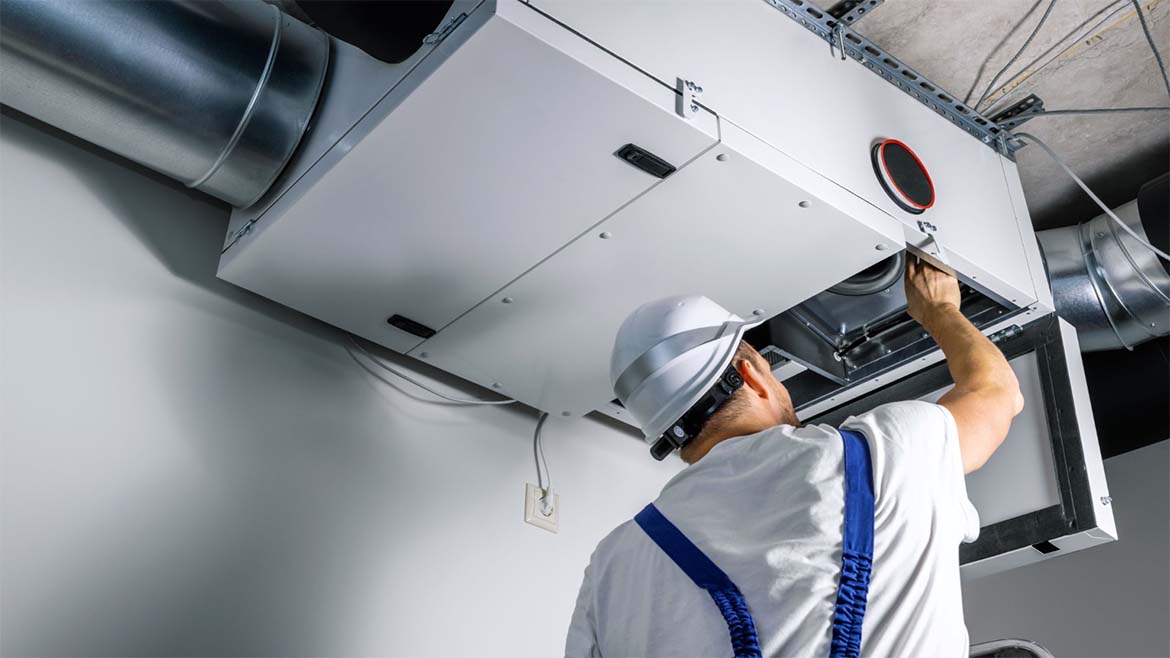Industrial, business, and residential sectors all have one thing in common; the need for heating and cooling. Whether it’s a chemical storage area requiring consistent temperature and complex filters or an office block with hundreds of employees working throughout the day, maintaining temperature control is essential within any operation.
To achieve this, an HVAC system can be used. These play host to a variety of sensors, depending on individual system requirements and complexity. Take pressure sensors, for example — these are responsible for monitoring air pressure levels across filters and other devices to ensure the HVAC system is functioning correctly and to alert technicians in case of filter blockages or more serious issues.
Compressors for Cooling Functionality
The air conditioning unit within an HVAC system will typically rely on the use of refrigerants for space cooling. Warm air is drawn in over a set of coils containing the refrigerant, which absorbs this heat. The refrigerant is then compressed into a hot, high-pressure gas, and passed onto the condenser unit where this heat energy can be released.
Pressure sensors can start or stop the compressor based on the internal pressure values measured to ensure the system runs smoothly and efficiently. But they also fulfill a crucial safety check.
Tiny holes or cracks in the coil can result in refrigerant leaks. Depending on the severity of the leak and the nature of the refrigerant, these can be hard to detect by sight or by smell, and the system may overwork itself to compensate. An ample supply of refrigerant is crucial to keeping the AC system running, but any leaks could also represent a potential safety hazard. Common refrigerants such as Freon can be harmful, particularly in high concentrations or in small, confined spaces. As a result, pressure sensors may be utilized here to monitor the condition of the compressor, and to flag up potential drops in pressure that could signify a hazardous leak.
Fine-Tuned Temperature Control
Another example that makes use of pressure sensor technology is the variable air volume (VAV) system, which supplies a changing airflow volume rather than a constant air volume (CAV). VAV systems use additional sensors at the inlet to open or close internal dampers and therefore adjust the airflow. These adjustments can be made based on a variety of control parameters, in comparison to a CAV system that can only operate in constant, maximum, or an “off” state. The result of this is a more fine-tuned approach to temperature control with VAV. Furthermore, the varying airflow also makes use of lower fan speeds, resulting in quieter operation as well as reduced energy consumption.
Because the VAV system offers more sophisticated control, it’s possible to integrate the HVAC system with additional devices to unlock extra benefits. For example, a combination with occupancy sensors could allow the HVAC system to adjust between ideal temperature levels depending on the real-time usage of the space.
Optimizing Electronics
At its core, a pressure sensor is comprised of the sensing element, processing unit, and a communication module. The signal measured by the sensor will normally be in an analog form and must be conditioned and digitized before processing or being communicated to other devices.
It is possible to obtain standard off-the-shelf ICs with the basic functionalities to perform this task of signal conversion. But for an optimized system that sets itself apart from the competition, it’s often preferable to use an Application Specific IC (ASIC).
An ASIC is a bespoke chip designed specifically for its application — in this case, its specific role within elements of the HVAC system. Offering sensor-specific integration, ASICs offer improved performance over their commercially available alternatives as well as reduced power consumption due to performance optimization.
ASIC integration also offers the benefit of system calibration. Calibrated data can be stored in onboard OTP/flash memory, allowing for the calibration of individual sensors and correction of raw pressure data. This ensures precise measurements even over extended operating periods and helps to maintain the efficiency and reliability of the HVAC system overall.
When it comes to off-the-shelf ICs, obsolescence can be an area of concern. Standard chip manufacturers may cease production at any time, whether it’s the result of a particular silicon process becoming obsolete or a significant drop in IC sales volume. In contrast, ASICs are designed with non-obsolescence in mind.
The choice of silicon process is made with careful consideration of the supply and longevity required by the product. And, in the case that the process does become obsolete sooner, solutions will be presented to the customer in ample time to ensure a continuous supply. This could include the purchase of LTB wafers or porting the design onto a new process altogether. Working with an experienced ASIC supplier such as Swindon means that customers are involved and guided through the decision-making process, resulting in the creation of a complete non-obsolescence plan.
HVAC systems can be found in a variety of environments, be it industrial, commercial, or residential. Regardless of its final installation point, it’s crucial that the HVAC system offers the same high level of performance to whoever it serves. By optimizing the design right from chip level, unit manufacturers can guarantee their system offers a performance a cut above its competition.
To learn more about Swindon Silicon and its custom IC solutions, visit https://www.swindonsilicon.com/news/
Whether you require installation, repair, or maintenance, our technicians will assist you with top-quality service at any time of the day or night. Take comfort in knowing your indoor air quality is the best it can be with MOE heating & cooling services Ontario's solution for heating, air conditioning, and ventilation that’s cooler than the rest.
Contact us to schedule a visit. Our qualified team of technicians, are always ready to help you and guide you for heating and cooling issues. Weather you want to replace an old furnace or install a brand new air conditioner, we are here to help you. Our main office is at Kitchener but we can service most of Ontario's cities
Source link




Add Comment